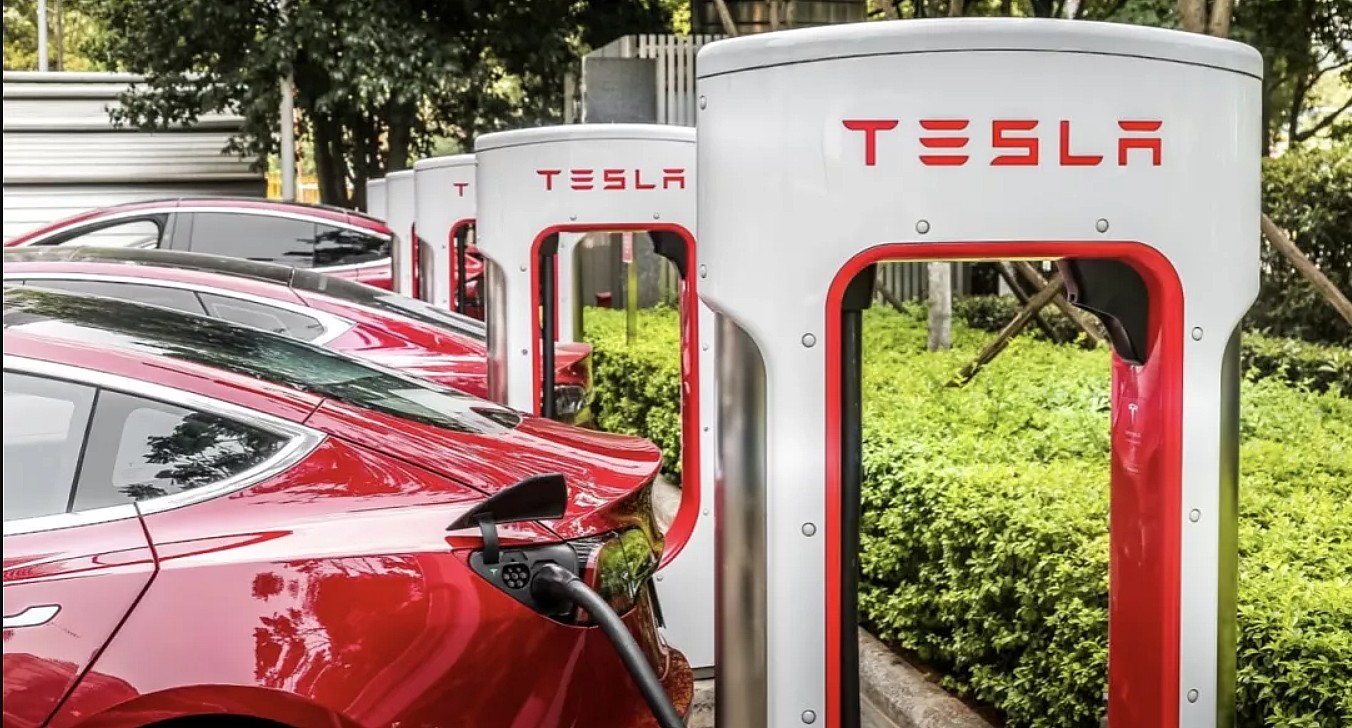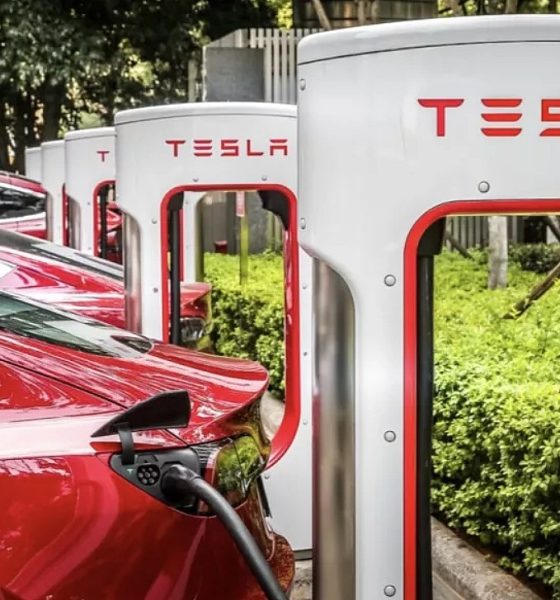

News
Singapore minister dismisses Elon Musk and Tesla, states hydrogen is ‘cleaner’ option
Elon Musk might command notable admiration and respect from countries such as China, but it appears that Singapore does not feel the same way about the Tesla CEO. In a recent interview with Bloomberg, Singapore’s minister for environment and water resources Masagos Zulkifli issued a brusque rebuttal to Musk’s statement on May 2018, which involved the CEO stating that the island nation was “unwelcome” to electric cars.
When asked by the news agency about his response to Musk’s previous comments, Zulkifli noted that the CEO wants to produce a “lifestyle,” and that is simply something that Singapore prefers to do. Instead, the island nation is looking for proper solutions to address the climate crisis, such as investing in mass transportation. “What Elon Musk wants to produce is a lifestyle. We are not interested in a lifestyle. We are interested in proper solutions that will address climate problems,” he said.
Musk’s tweets about Singapore came as a response to an electric vehicle enthusiast who inquired when Tesla will make its presence felt in the city-state. In a response on Twitter, Musk explained that Tesla had tried to enter the island nation, but Singapore’s government was “not supportive of electric vehicles.” It should be noted that Singapore is incredibly restrictive to ownerships of single-occupancy vehicles, both electric and those powered by the internal combustion engine.
Instead, the city has invested heavily in mass transit systems, with trains and buses covering much of the island’s 720 square kilometers (280 square miles). Yet, despite this, Zulkifli maintained that Singapore is uniquely positioned to embrace a zero-emissions fleet. “If there’s any country which can convert from petrol cars to 100% EVs, it will be Singapore,” he said.
Interestingly, Zulkifli noted that he believes hydrogen-powered vehicles are a better long-term solution than all-electric cars as a means to decarbonize transportation. As noted in a Bloomberg report, the Singapore minister explained that is due to the carbon footprint of battery-electric vehicles, which come mainly from mining the materials required to produce batteries and the challenges for their disposal.
These concerns might prove unfounded in the long run, especially since companies like Tesla are working to optimize the materials used in its vehicle’s batteries, including an initiative to completely remove cobalt from its battery cells. Companies such as Rivian and Jaguar have also started programs to repurpose vehicle batteries after they are no longer optimal for use, converting them into energy storage devices that can be used for homes and remote areas.
Singapore welcomed its first charging point at a petrol station earlier this month, as per the Royal Dutch Shell Plc, and nine more are expected to open by October. This, if any, is a way to address a recent study which showed that about 52% of Singaporeans are deterred from purchasing an electric car because they believe there are not enough places to charge their vehicles (a valid concern considering that most of the island nation’s population do not have personal garages). “Just choosing a parking spot is already problematic. And now you want to say who gets the charging point. We do not have the solution yet,” Zulkifli said.

News
Tesla starts showing how FSD will change lives in Europe
Local officials tested the system on narrow country roads and were impressed by FSD’s smooth, human-like driving, with some calling the service a game-changer for everyday life in areas that are far from urban centers.

Tesla has launched Europe’s first public shuttle service using Full Self-Driving (Supervised) in the rural Eifelkreis Bitburg-Prüm region of Germany, demonstrating how the technology can restore independence and mobility for people who struggle with limited transport options.
Local officials tested the system on narrow country roads and were impressed by FSD’s smooth, human-like driving, with some calling the service a game-changer for everyday life in areas that are far from urban centers.
Officials see real impact on rural residents
Arzfeld Mayor Johannes Kuhl and District Administrator Andreas Kruppert personally tested the Tesla shuttle service. This allowed them to see just how well FSD navigated winding lanes and rural roads confidently. Kruppert said, “Autonomous driving sounds like science fiction to many, but we simply see here that it works totally well in rural regions too.” Kuhl, for his part, also noted that FSD “feels like a very experienced driver.”
The pilot complements the area’s “Citizen Bus” program, which provides on-demand rides for elderly residents who can no longer drive themselves. Tesla Europe shared a video of a demonstration of the service, highlighting how FSD gives people their freedom back, even in places where public transport is not as prevalent.
What the Ministry for Economic Affairs and Transport says
Rhineland-Palatinate’s Minister Daniela Schmitt supported the project, praising the collaboration that made this “first of its kind in Europe” possible. As per the ministry, the rural rollout for the service shows FSD’s potential beyond major cities, and it delivers tangible benefits like grocery runs, doctor visits, and social connections for isolated residents.
“Reliable and flexible mobility is especially vital in rural areas. With the launch of a shuttle service using self-driving vehicles (FSD supervised) by Tesla in the Eifelkreis Bitburg-Prüm, an innovative pilot project is now getting underway that complements local community bus services. It is the first project of its kind in Europe.
“The result is a real gain for rural mobility: greater accessibility, more flexibility and tangible benefits for everyday life. A strong signal for innovation, cooperation and future-oriented mobility beyond urban centers,” the ministry wrote in a LinkedIn post.
News
Tesla China quietly posts Robotaxi-related job listing
Tesla China is currently seeking a Low Voltage Electrical Engineer to work on circuit board design for the company’s autonomous vehicles.

Tesla has posted a new job listing in Shanghai explicitly tied to its Robotaxi program, fueling speculation that the company is preparing to launch its dedicated autonomous ride-hailing service in China.
As noted in the listing, Tesla China is currently seeking a Low Voltage Electrical Engineer to work on circuit board design for the company’s autonomous vehicles.
Robotaxi-specific role
The listing, which was shared on social media platform X by industry watcher @tslaming, suggested that Tesla China is looking to fill the role urgently. The job listing itself specifically mentions that the person hired for the role will be working on the Low Voltage Hardware team, which would design the circuit boards that would serve as the nervous system of the Robotaxi.
Key tasks for the role, as indicated in the job listing, include collaboration with PCB layout, firmware, mechanical, program management, and validation teams, among other responsibilities. The role is based in Shanghai.
China Robotaxi launch
China represents a massive potential market for robotaxis, with its dense urban centers and supportive policies in select cities. Tesla has limited permission to roll out FSD in the country, though despite this, its vehicles have been hailed as among the best in the market when it comes to autonomous features. So far, at least, it appears that China supports Tesla’s FSD and Robotaxi rollout.
This was hinted at in November, when Tesla brought the Cybercab to the 8th China International Import Expo (CIIE) in Shanghai, marking the first time that the autonomous two-seater was brought to the Asia-Pacific region. The vehicle, despite not having a release date in China, received a significant amount of interest among the event’s attendees.
Elon Musk
Elon Musk and Tesla AI Director share insights after empty driver seat Robotaxi rides
The executives’ unoccupied tests hint at the rapid progress of Tesla’s unsupervised Robotaxi efforts.

Tesla CEO Elon Musk and AI Director Ashok Elluswamy celebrated Christmas Eve by sharing personal experiences with Robotaxi vehicles that had no safety monitor or occupant in the driver’s seat. Musk described the system’s “perfect driving” around Austin, while Elluswamy posted video from the back seat, calling it “an amazing experience.”
The executives’ unoccupied tests hint at the rapid progress of Tesla’s unsupervised Robotaxi efforts.
Elon and Ashok’s firsthand Robotaxi insights
Prior to Musk and the Tesla AI Director’s posts, sightings of unmanned Teslas navigating public roads were widely shared on social media. One such vehicle was spotted in Austin, Texas, which Elon Musk acknowleged by stating that “Testing is underway with no occupants in the car.”
Based on his Christmas Eve post, Musk seemed to have tested an unmanned Tesla himself. “A Tesla with no safety monitor in the car and me sitting in the passenger seat took me all around Austin on Sunday with perfect driving,” Musk wrote in his post.
Elluswamy responded with a 2-minute video showing himself in the rear of an unmanned Tesla. The video featured the vehicle’s empty front seats, as well as its smooth handling through real-world traffic. He captioned his video with the words, “It’s an amazing experience!”
Towards Unsupervised operations
During an xAI Hackathon earlier this month, Elon Musk mentioned that Tesla owed be removing Safety Monitors from its Robotaxis in Austin in just three weeks. “Unsupervised is pretty much solved at this point. So there will be Tesla Robotaxis operating in Austin with no one in them. Not even anyone in the passenger seat in about three weeks,” he said. Musk echoed similar estimates at the 2025 Annual Shareholder Meeting and the Q3 2025 earnings call.
Considering the insights that were posted Musk and Elluswamy, it does appear that Tesla is working hard towards operating its Robotaxis with no safety monitors. This is quite impressive considering that the service was launched just earlier this year.








